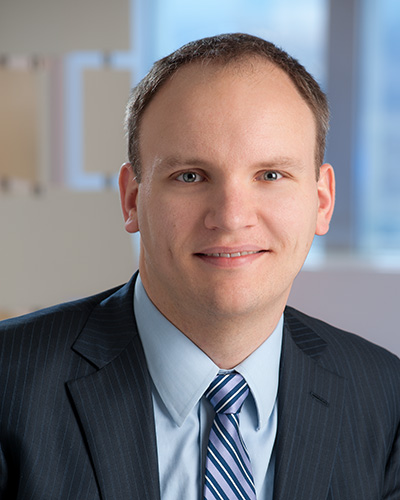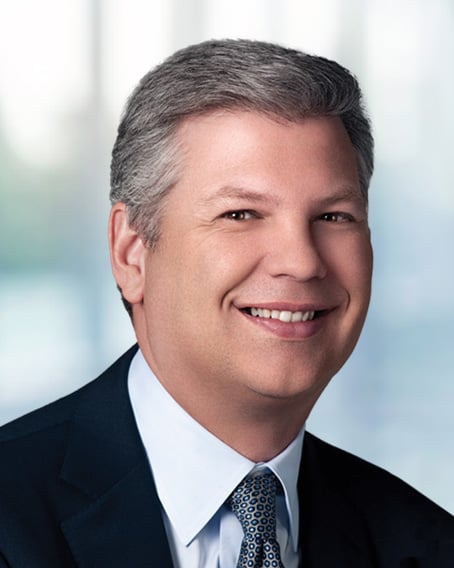In this Ropes & Gray podcast, asset management partners Arthur Andersen and John Ayer discuss the private equity industry’s increasing interest in long-hold investment structures, along with the emergence of sponsors’ ability to offer such structures as an important competitive advantage. They discuss how innovations in the industry have created more flexible arrangements for sponsors considering longer duration investments.
Transcript:
Arthur Andersen: Hello, and thank you for joining us today on this Ropes & Gray podcast. I am Arthur Andersen, and joining me today is John Ayer. Both of us are partners in our asset management group. In today’s podcast, we are going to discuss the growth in long-hold private equity investment structures and how the ability to offer such structures can be an important competitive advantage—particularly in an environment with substantial price competition. We’ll discuss implications for private equity sponsors, and for the traditional private equity investing model.
John, to set the stage for our discussion, can you first give us a sense of what we mean by the traditional model?
John Ayer: Sure, Arthur. By the traditional private equity model, we’re referring to the ownership of portfolio companies within pooled investment vehicles with finite terms, typically of ten years. These funds are invested over the first 5 or 6 years of their terms, and harvested during the remainder, resulting in holding periods for individual companies often around 3-5 years. A finite fund term means that sponsors are routinely returning to the market to raise subsequent funds, driving a need to generate realizations in order to demonstrate investment returns to prospective investors.
Arthur, can you describe some of the ways this structure can be limiting when applied to long-term investing?
Arthur Andersen: Happy to, John. The traditional fund model is very good at maximizing returns during a finite holding period, especially in an environment where often the most substantial portion of investment gains are driven by sponsor-initiated operating improvements that can be realized relatively quickly. But, some company owners, sponsors and investors believe the traditional model is less well-adapted for some portfolio companies. Some people refer to this as the so-called “great company” problem with private equity. Companies with compelling franchises and enduring competitive advantages are hard to buy and can be attractive as long-term investments, but the traditional private equity model basically precludes long-term ownership. Secondly, some sellers—especially some founder or family-owned businesses—are looking for long-term partners and are not making decisions on who to sell to solely on the basis of price. These sellers often do not believe it is right for them or their businesses to become locked into a system that will often lead to repeated ownership transitions among private equity firms every few years or so.
John Ayer: That’s right, Arthur. For sellers looking for long-term ownership, certain buyers can be more appealing. For example, specialist funds, large family offices, sovereign wealth funds and other similar investors with permanent or long-term capital continue to expand as an alternative to traditional private equity as a financial partner. These types of buyers are generally not constrained by finite fund terms and can offer the advantages of both long-term ownership and avoiding the prospect of a cycle of repeat sales.
GP-led secondary transactions, which continue to grow in popularity and acceptance, also represent a way for a traditional private equity sponsor to maintain continuity of ownership over a longer-period while still operating within the typical finite-term fund structure. By transferring ownership of a portfolio company from the original fund to a new vehicle with an extended term that’s organized by the same sponsor, these transactions permit a sponsor to retain ownership of a portfolio company and offer a meaningful alternative to a sale of the company after a relatively short period of ownership. However, this is an inherently back-ended solution since sponsors cannot commit upfront to completing these transactions. As a result, sponsors are not really able to use the possibility of a GP-led secondary to give strong assurance to sellers of an extended holding period.
Arthur, are there other steps private equity firms are taking to address the longer duration question?
Arthur Andersen: Yes, John, we’ve seen firms take a few different approaches. A few sponsors have abandoned the traditional finite-term fund model altogether in favor of long-dated or permanent capital vehicles designed to permit extended or indefinite holding periods. This, however, remains a very small subsection of the private equity market overall. These structures raise their own inherent complexities, and for private equity firms that have already been operating within the traditional model, may represent a greater shift than these firms or their investors are looking to make.
Firms looking to make less dramatic changes are employing incremental modifications in terms that can improve firms’ ability to compete in situations where a longer-hold period is an important factor. For example, a meaningful portion of recent private equity funds, especially in the middle market, have terms beyond 10 years (usually 12-13 years or so, with a few extending to 15)—whether through longer base terms or an increased ability to extend. Additionally, firms can build out provisions and disclosures in new fund agreements to streamline and facilitate the type of single-asset transactions and other GP-led secondaries you just described, John—for example, by being thoughtful about the approvals required to complete those transactions. These types of changes are relatively simple to implement because they retain the core structure of the finite-term model, but likewise they are often only marginally effective when competing against buyers who can offer a true long-term hold opportunity.
John, are there any other noteworthy innovations in this area?
John Ayer: Yes, Arthur. Likely the most noteworthy development has been to pre-wire long-hold, continuation vehicle-type structures into a traditional fund structure. In other words, a few sponsors have successfully retained a traditional, finite-term fund, but have also incorporated rights to create long-hold vehicles for specific assets. For some of these firms, the use of such long-hold structures opportunistically is core to their investment strategy, and therefore, a stronger signal to potential portfolio company sellers of their willingness—and ability—to be a long-term investment partner. At the same time, this approach allows sponsors to maintain flexibility and avoid long-hold structures for investments where an extended holding period is not beneficial.
Arthur Andersen: Thanks, John. That brings us to the end of our discussion. John and I would like to thank all of you for joining. If you have any questions regarding the topics addressed or anything else, please don't hesitate to get in touch with either of us, or whomever you already have a relationship with at Ropes. You can also subscribe and listen to Ropes’ podcasts wherever you regularly listen to podcasts, including Apple and Spotify.
Speakers
Stay Up To Date with Ropes & Gray
Ropes & Gray attorneys provide timely analysis on legal developments, court decisions and changes in legislation and regulations.
Stay in the loop with all things Ropes & Gray, and find out more about our people, culture, initiatives and everything that’s happening.
We regularly notify our clients and contacts of significant legal developments, news, webinars and teleconferences that affect their industries.




